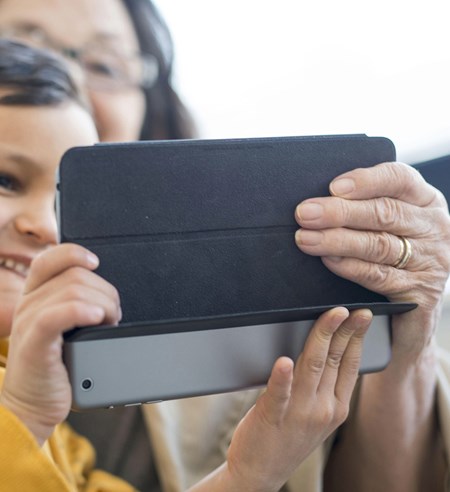Head of Data & AI, Tietoevry Care
The challenge
Finding out a way to link the patients with acute leukemia to appropriate clinical trials and enable a medical treatment that is the most effective for their disease.
The solution
Smart software supports research and enables faster and more accurate clinical decision-making and personalized treatment for patients with a life-threatening illness that requires rapid diagnosis and treatment decisions.
About the customer
HUS CleverHealth Network is a health technology ecosystem founded in 2017. The network enables companies and healthcare experts to work together and develop better health care for Finns and successful health technology export products for companies. Product and service innovations are based on the high-quality health data and the excellence of the clinics at HUS Helsinki University Hospital.
The Acute Leukemia research project in eCare for Me project group in the CleverHealth Network is developing automated diagnosis and treatment choice. The aim is to create an intelligent application that can be used in both clinical patient work and research.
The project team is led by Kimmo Porkka, Professor of Hematology and Chief Physician at Helsinki University Hospital.
www.cleverhealth.fi/en www.hus.fi/enSimplifies participating in research
Simplifies aggregation of growing amount of data from different sources. Helps identifying patients suitable for clinical trials more effectively and opportunity to participate research can be offered
Improves personal treatment
More targeted treatments for genetic changes in their cancer cells can be offered to patients. The range of treatments expands in a situation where other treatments have been tried already.
Supports international research
The structuring of clinical data in accordance with the International Common Information Model (OMOP) CDM) enables proficient information secure cooperation between domestic and foreign centers.
AI helps in clinical trials of cancer
The Trial Matching app under development connects leukemia patients with suitable drug research.

Help for analyzing the increasing amount of data
Perttu Koskenvesa is part of a team led by Kimmo Porkka, which is developing a clinical Trial Matching application. The development project automates a previously manual process in which suitable medicine trials are sought for patients with a blood disease, and patients who meet the research criteria are sought for ongoing clinical trials.
“We use the data stored in patient information systems in a way that benefits the treatment and eliminates laborious steps in manual data processing and aggregation,” says Koskenvesa.
The amount of patient-specific data has increased significantly over the last 10–15 years. The term acute leukemia includes a number of different forms of the disease, and the treatment of each can vary greatly. The molecular genetic differences of the disease and the drugs available for them shape the treatment path.
Combining ongoing research with suitable patients requires information on current research about the number of research participants and who can participate. The data is also intended to assess different studies that can be carried out, in other words, whether suitable patients can be found.
"Utilizing all the information stored in the patient information system is almost impossible if the analysis of the data depends only on human activity," says Koskenvesa.
We want to know better the patients that need treatment, the number of different patients, and be ready to get involved with studies that offer drug treatment for different subtypes of leukemia.
Perttu Koskenvesa
Clinical Hematology Specialist, HUS Cancer Center
Precise guidance for clinical trials
The Trial Matching application, which supports the research of acute leukemia and speeds up diagnostics, utilizes data from HUS's data pool, i.e. Finland's largest healthcare data repository.
In Trial Matching, patient data needed to diagnose leukemia and plan treatment are extracted from the HUS data pool and collected as a separate data repository in accordance with the research permit. Patients are retrieved from the data mass for clinical trials using predefined study criteria.
The tool's key features are the creation of patient cohorts and the development of reports to support research activities. The clinician makes the final decision on patients to be included in the study.
Trial Matching can also be used to find out the best medication proposal for a patient from the options already available. The application can take into account all patient-specific findings and possible differences in treatment planning.
"Prescribing drug therapy to patients with a molecule abnormality that predicts a good response in cancer cells. In this way, targeting can be used to get more effective treatment for them. Using the same medicine for a person who doesn't have this change is practically useless and would not produce anything other than side effects," says Koskenvesa.
Patient diagnosis is made easier in automated systems. The use of information technology reduces the risk that human error will affect the implementation of the treatment.
Perttu Koskenvesa
Clinical Hematology Specialist, HUS Cancer Center
Inclusion and exclusion criteria sieve patients and studies
The development process of Trial Matching is based on the clinical research routines of Helsinki University Hospital. So far, the research criteria have arrived as PDF files for professionals who make the decisions concerning treatments, and combining data on patients with the criteria has been manual.
During the construction phase of the application, the criteria for clinical trials are stored in a structured format, which allows for their efficient processing, the development of artificial intelligence, and the real-time updating of the criteria.
"Data is obtained from research plans, i.e. protocols that define inclusion and exclusion criteria. In the future, we will be able to respond better to preliminary surveys that assess the possibility of participating in planned research," says Koskenvesa.
The aim is to have a shared information model in Finland, which also facilitates national research cooperation and information sharing. The data is also converted to an international standard format (OMOP data model), making the solution scalable at the national and global levels.
The first phase of the development project will be completed at the end of 2021.
Clinical expertise is critical in understanding of what data source the application requires.
Perttu Koskenvesa
Clinical Hematology Specialist, HUS Cancer Center


